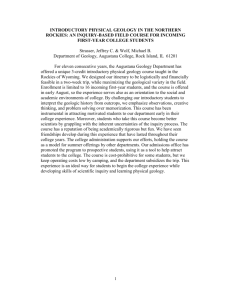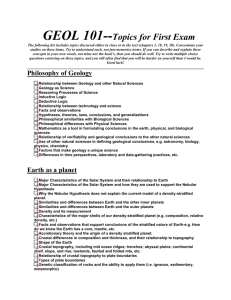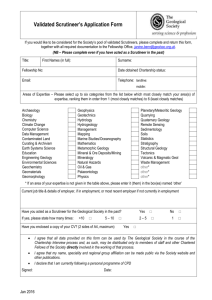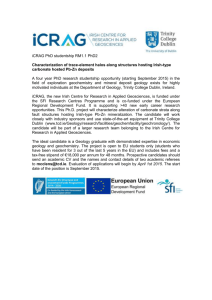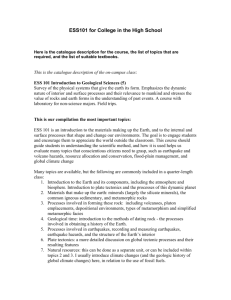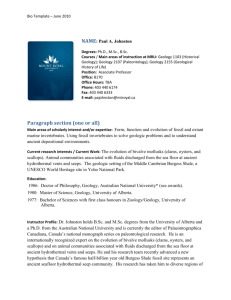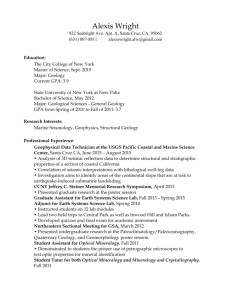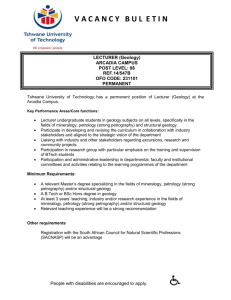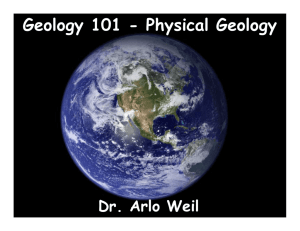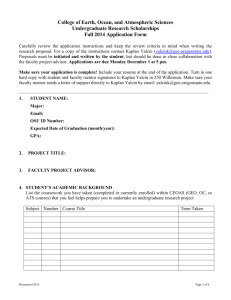Geology and GIS
advertisement
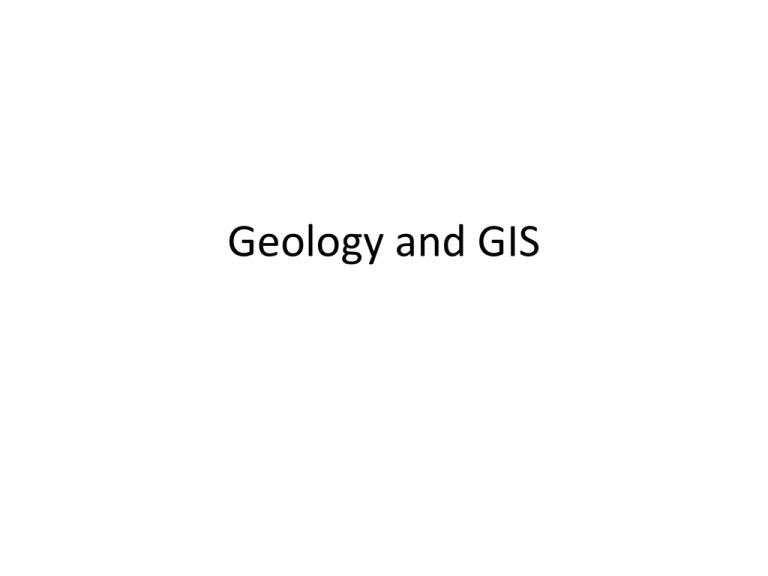
Geology and GIS Content development • A bit of content for you non-geology types… • after http://www.earthscienceliteracy.org/index.html A few big idea in Geology/Earth Sci. • Big Idea 1- Earth scientists use repeatable observations and testable ideas to understand and explain our planet. – Works to assist humanity with challenging problems… – Combines aspects of biology, chemistry, physics, and mathematics… Big idea 2 Earth is ____ years old. 4.6 Billion years of time… • The Earth’s rock record provides a natural library for its history (construction, destruction, change, evolution, etc.) – Life on Earth began 3.5 billion years ago – The record contains gaps (unconformities) • Two crust types = oceanic and mafic • Gradualism vs. Catastrophism • Big Idea # 3 – The Earth is a complex system of interacting rock, water, and life! – Spheres = geo, hydro, atmo, and bio… – All processes are the result of changing energy between systems • Sun • Core – These systems are dynamic, constantly changing, and contain feedback systems Albedo • Big Idea #4 – The Earth is a water planet… – Water water ever where from the upper atmosphere to depths of the mantle. – Water is essential for life on Earth! – Water shapes the Earth’s landscapes • Big Idea #5 Life evolves on a dynamic Earth and continuously changes our planet. – Fossils are preserved evidence of ancient life – Evolution, including the origination and extinction of species, is a natural and ongoing process – Mass extinctions occur when global conditions change faster than species in large numbers can adapt. Controversy? • Life, human life is a mere occurrence of time. I say this not to be little our existence, but rather to emphasize the miracle, that we are here at all. Science and religion • Xavier Le Pichon • Fragility and the evolution of our humanity • http://being.publicradio.org/programs /2009/fragility/ • Big idea # 7 We (humans) depend on the Earth for resources – Recourses mold our civilization – Natural recourses are limited – Geology affects the distribution and development of human populations – Fossil fuels and uranium currently provide most of our energy resource – Earth scientists help society move toward greater sustainability • Big idea #7 Natural hazards pose risks to humans… – Earthquakes, tsunamis, floods, draughts, sinkholes, landslides, severe weather, etc. – Again gradualism vs. catastrophism – Scale – local to global – Increasing populations in hazardous areas • Big idea #8 We (humans) significantly alter each of the Earth’s spheres. – We alter the rate of the Earth’s processes – We can use the geologic record to distinguish natural vs. human influences – Humans affect the quality, availability, and distribution of Earth’s water through the modification of streams, lakes, and groundwater – An Earth-science-literate public, informed by current and accurate scientific understanding of Earth, is critical to the promotion of good stewardship, sound policy, and international cooperation Homework for this week • Create an activity that incorporates geology layers, within any theme of your choosing • Or Listen to the Xavier Le Pichon podcast and write paper (no more than two pages) first page a summary of what he was talking about and a second page as a personal reflection (what do you personally think about his perspective?) Only the first page will be graded. http://being.publicradio.org/programs/2009/frag ility/ GIS and Geology options • Make sure that you use the format provided in the activity book that I sent you… Some geology layers that you might want to use…. – Bedrock – Pahas – Dunes – Coal mines – Aggregate sources beds – Sinkholes

